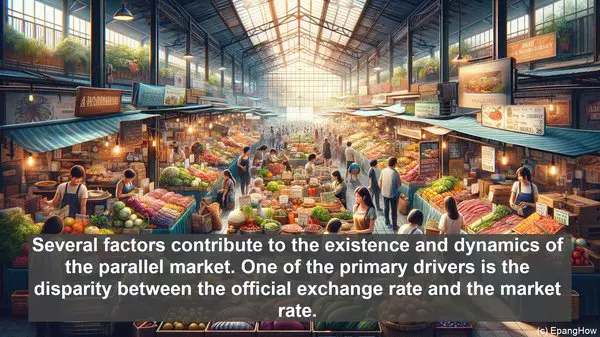Introduction: The Dual Landscape of Foreign Exchange
Greetings, ladies and gentlemen! The world of foreign exchange is not a monolithic entity. Instead, it is characterized by a duality, with two distinct markets operating in tandem: the parallel market and the official market. While both these markets deal with the exchange of currencies, they differ significantly in their structure, functioning, and implications. Today, we embark on a journey to unravel the nuances of these markets, equipping you with the knowledge to navigate this complex terrain.

The Official Market: A Regulated Realm
Let’s begin with the official market. As the name suggests, this market is the regulated, formal avenue for foreign exchange transactions. It operates under the purview of central banks, financial institutions, and governmental bodies. The exchange rates in the official market are determined through a variety of mechanisms, such as fixed rates, floating rates, or a combination of both. Importantly, these rates are influenced by factors like national economic policies, interest rates, and trade balances. Transactions in the official market are typically transparent, documented, and subject to regulatory oversight, ensuring stability and adherence to legal frameworks.
The Parallel Market: An Informal Frontier
In contrast, the parallel market, also known as the black market or the informal market, is characterized by a lack of regulation and oversight. It operates outside the purview of official channels, often driven by individual traders, brokers, or small-scale entities. The exchange rates in the parallel market are not determined through formal mechanisms but rather through the interplay of supply and demand dynamics. As a result, these rates can fluctuate significantly, sometimes deviating substantially from the rates in the official market. The parallel market is often associated with cash transactions, anonymity, and a certain level of risk. It is important to note that while the parallel market may be deemed illegal in some jurisdictions, it continues to thrive due to various factors, such as currency controls, economic instability, or simply the need for individuals to access foreign currencies quickly.
Factors Influencing the Parallel Market
Several factors contribute to the existence and dynamics of the parallel market. One of the primary drivers is the disparity between the official exchange rate and the market rate. When this disparity is significant, it creates an incentive for individuals and entities to engage in parallel market transactions, as it can offer more favorable rates. Additionally, economic factors like inflation, political instability, or capital controls can also fuel the growth of the parallel market. In some cases, the parallel market may even act as a barometer of the overall economic health, reflecting the sentiments and realities that may not be fully captured by the official market.
Implications and Significance
The existence of parallel markets can have wide-ranging implications. On one hand, they can provide a lifeline for individuals and businesses, enabling them to access foreign currencies when official channels may be limited or restrictive. This is particularly crucial in contexts like remittances, where individuals rely on parallel markets to send money to their families or support their businesses. On the other hand, parallel markets can also pose challenges, such as potential money laundering, tax evasion, or the erosion of confidence in the official market. Governments and regulatory bodies often grapple with the task of striking a balance between curbing the negative aspects while ensuring the availability of foreign currencies to meet the legitimate needs of the populace.

